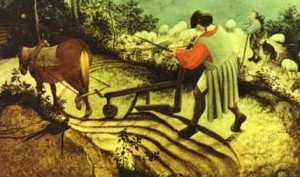Before the Industrial Revolution, for preparing the “Economic Table” documenting the exchanges of goods and services in rural France (Quesnay 1756) “production” meant producing farm “produce” and “consumption” meant, in the main, eating it, literally consuming it through the mouth. The Economic Table presented the relationship as a zigzag, and later the diagram became institutionalized as a “circular flow” between producers and consumers. It was a hundred years later amongst scientists (Carnot 1824, Mayer 1841, Clausius 1850) that there gradually became a recognition of the First and Second laws of Thermodynamics, and another hundred years transpired before it was pointed out clearly (by an economist, Georgescu-Roegen 1971) that matter and energy are not really produced or consumed, but conserved (First Law), and in a closed system any processed flow degrades the quality of matter and energy (Second Law).
In a system that is not closed, economic actors can process flows of matter and energy, sorting high quality and discarding the low quality. The concept of economic activity in an unbounded environment has become embedded in communal consciousness. In tribal society consuming the goodness of food, benefitting from body maintenance, growth and action, and discarding the waste was done seemingly instinctively. In villages and as they became cities, production and consumption was more organized, and waste disposal though recycling and sewers also evolved.
As communities developed there was natural evolution to exploit cross boundary flows, importing high grades of matter and energy, processing them and exporting the degraded output (either as solids, liquids or gases) outside the border. A further extension saw the dirtier forms of processing taking place outside the borders of a community that was economically developed and only importing the clean high grades of matter and energy.
China is the last place to serve as a factory to the world and its rapid development coincided with and was partially the cause of realization that the global economy is materially closed, with no practicable technology in the next century at least, to import goods or export waste.
Economists and societies’ leaders beholden to the old paradigm have no future in today’s world.

No comments yet.